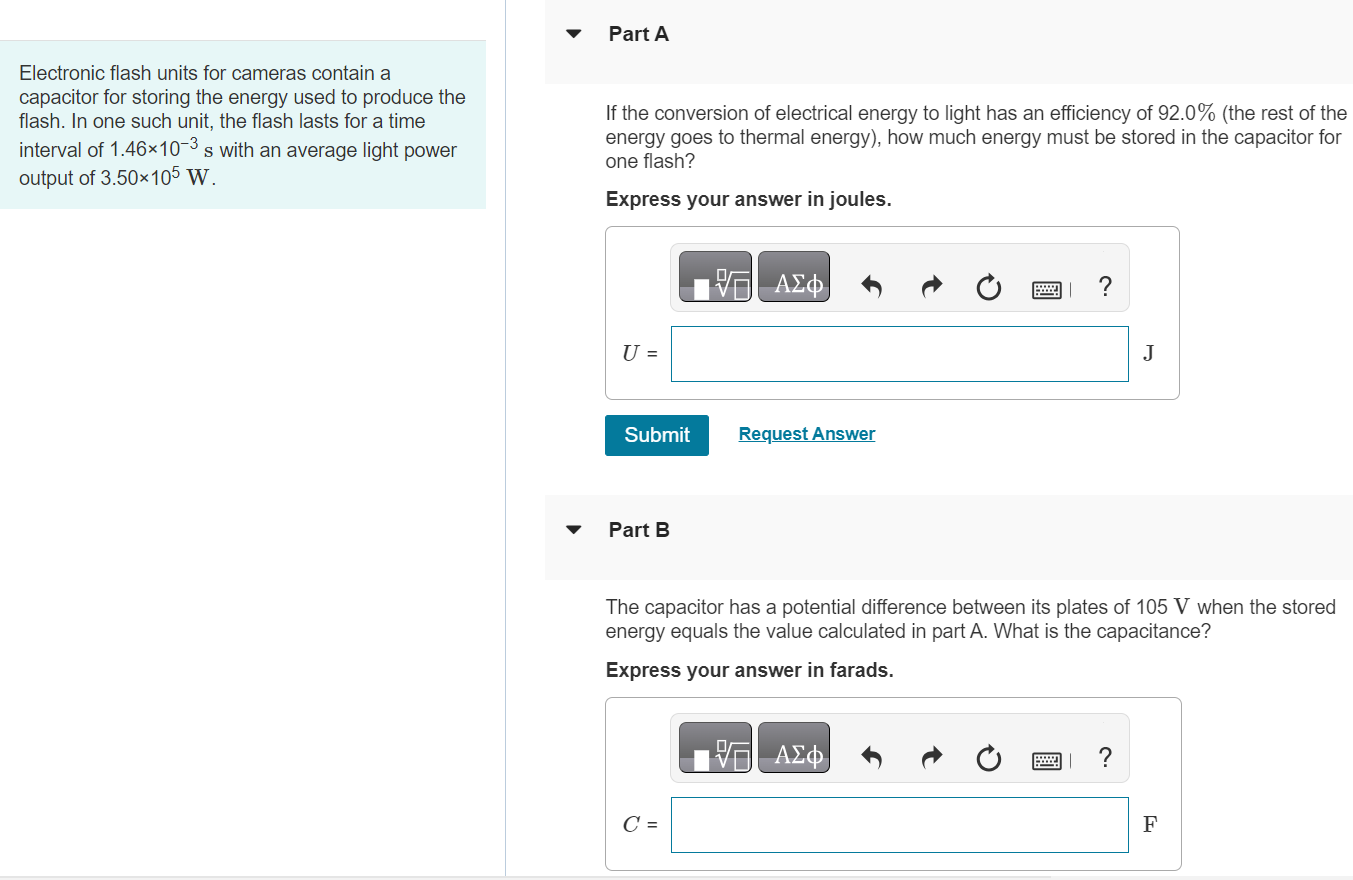Electronic flash units for cameras contain a capacitor for storing the energy used to produce the flash. In one such unit, the flash lasts for a time interval of 1.46×10−3 s with an average light power output of 3.50×105 W Part A If the conversion of electrical energy to light has an efficiency of 92.0% (the rest of the energy goes to thermal energy), how much energy must be stored in the capacitor for one flash? Express your answer in joules. Submit Request Answer Part B The capacitor has a potential difference between its plates of 105 V when the stored energy equals the value calculated in part A. What is the capacitance? Express your answer in farads.
